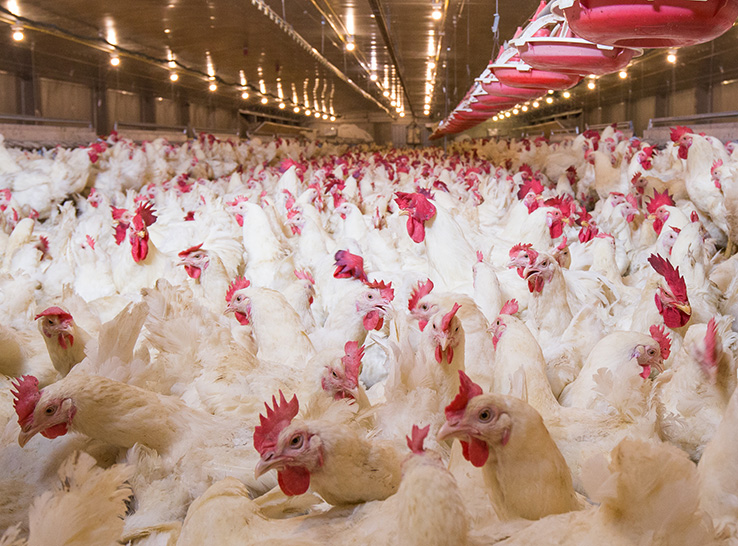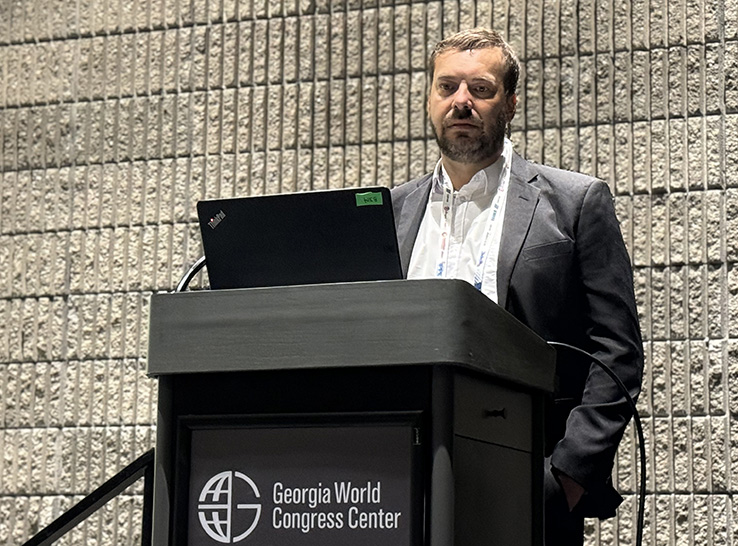Samples tested from recent infectious laryngotracheitis (ILT) outbreaks on US poultry farms raised alarms that the current circulating virus is rapidly spreading.
The samples also showed increased virulence compared to similar viruses 20 years ago when tested under experimental conditions.
“What we are seeing in the lab is an indication of what we’ve seen before,” Maricarmen Garcia, PhD, a professor at the University of Georgia who has worked extensively with the ILT, said In a webinar organized by the American Association of Avian Pathologists.
“The currently circulating virus has the ability to rapidly replicate and spread, so we should expect a lot of virus left behind in the chicken house environment and its surroundings.”
‘We need vaccination’
The current ILT virus is also more difficult to control than it was a few years ago.
“I always tell my students I wish we could say [ILT] is controlled first by biosecurity and secondly via vaccination. But unfortunately, we are not there yet. Vaccination remains one of the main tools to protect flocks when a fast-spreading virus affects a heavily populated poultry region.”
Vaccination can’t do it alone, however.
“For vaccination to be effective during outbreaks of the disease, strict biosecurity and implementation of regional litter management is also key,” Garcia said. “ILT virus will not pick and choose which birds to infect. All the birds within the region are susceptible if not properly protected from exposure.”
Genotyping IDs field strain
To understand how viruses evolve, scientists use a process called genotyping to determine the DNA sequence, or genotype, at positions within the genome — a complete set of genes or genetic material in a cell or organism. It allows scientists them explore genetic variants.
Using the latest genotyping methods, Garcia identified the main ILT culprit as genotype 6 (G6), a field strain. Currently, five genotypes of both field and vaccine strains are found in US commercial flocks.
“The genotype data is from a limited number of production cases in the US,” she said. “Not every single outbreak of ILT is genotyped. Whoever wants to know will send a sample to our lab and we [genotype] it on a research basis to figure out what virus is circulating and causing disease. Even with these limitations, some trends emerge.”
In 2020, the university lab tested 13 cases of ILT, five of which were G6. In 2021, 13 cases were tested and seven identified as G6.
ILT started to change in 2022 as G6 grew in dominance with 10 cases, Garcia noted. The number increased to 21 cases in 2023. At the same time, the incidence of other genotypes decreased and even disappeared.
“On a timeline of cases, you see G6 is constant and has been here every single year,” Garcia related. “In 2023, it increased significantly and has already increased in 2024 with 10 cases in January.”
Virulence tested
Concerned about the growing incidence of G6, Garcia conducted a test on its virulence, comparing the G6 isolated in 2004 to the G6 isolated in 2022. Two groups of specific pathogen-free Leghorn birds were challenged with the same dose by eyedrop and intratracheal inoculation.
“For the 2004 group, survivability of the birds was around 30% to 35%,” she said. “And in the 2022 group, not one bird was left. So yes, the currently circulating G6 type of virus is more virulent.”
Control measures
Garcia noted that G6 was “moving fast” and presented a new challenge for both live attenuated and recombinant vaccines and in vaccination programs where both types of vaccines are utilized.
Vaccinating with a live CEO (chicken embryo origin) vaccine produces optimal protection, but only one is currently available, she said.
Usually, the CEO vaccine is administered via drinking water, either by medicator or pump. It protects against clinical signs and blocks challenge-virus replication and transmission. However, it has the capability of reverting to virulence and causing full-blown ILT signs, which can set back flock performance.
TCO (tissue-culture-origin) modified-live vaccines, which are given by eyedrop, do not spread significantly or revert to virulence and is therefore a “very safe” option, she said.
Recombinant vaccines based on herpes virus of turkey (HVT) protect against Marek’s disease and, depending on the product, offer protection against ILT, infectious bursal disease and/or Newcastle disease. They are usually administered in ovo, have a high safety profile and long duration of immunity. The vaccines reduce clinical signs but do not decrease challenge virus replication sufficiently to avoid spread, Garcia explained.
“The onset of immunity and protection of recombinant vaccine is slower than that of the live attenuated ILT vaccines,” she added. Farms with a history of ILT often supplement recombinant vaccines with live vaccines to fill gaps in protection.
When to use CEOs
Despite the setbacks associated with the CEO vaccine, Garcia cited two scenarios where she’d recommend it to address G6 outbreaks.
The first is densely populated broiler areas where five or more consecutive cases of G6 have popped up. Growers can strategically vaccinate the areas that have more potential to be exposed to the virus.
The second is broiler-breeder flocks that have G6 outbreaks and were previously vaccinated with a recombinant followed with TCO vaccine.
When transporting these birds, Garcia recommended designing a route to the processing plant that decreases exposure to other flocks. Before new pullets are placed, consider increasing downtime, heating the house and composting litter inside. Then examine the strategic use of CEO vaccination before the pullets are placed in the house.
“These two scenarios are a sign for me that I have to use the only tool left, which is a CEO,” Garcia said. “So, dust off information on how to organize a CEO vaccination campaign via drinking water and use it for at least one grow-out.”
When using the CEO vaccine, Garcia recommended vaccinating every bird within a 5-day period. After that, the CEO will start shedding and cause problems.











